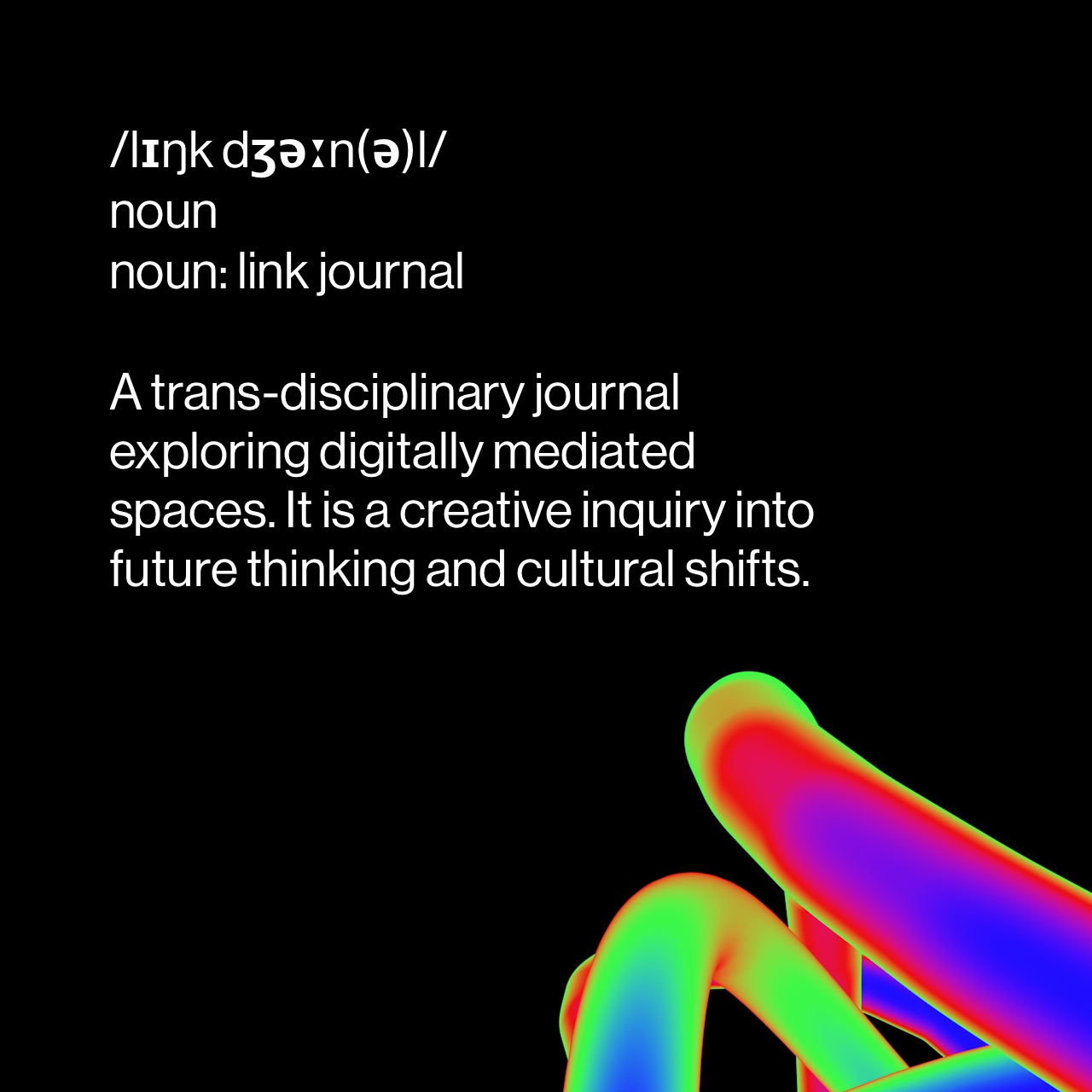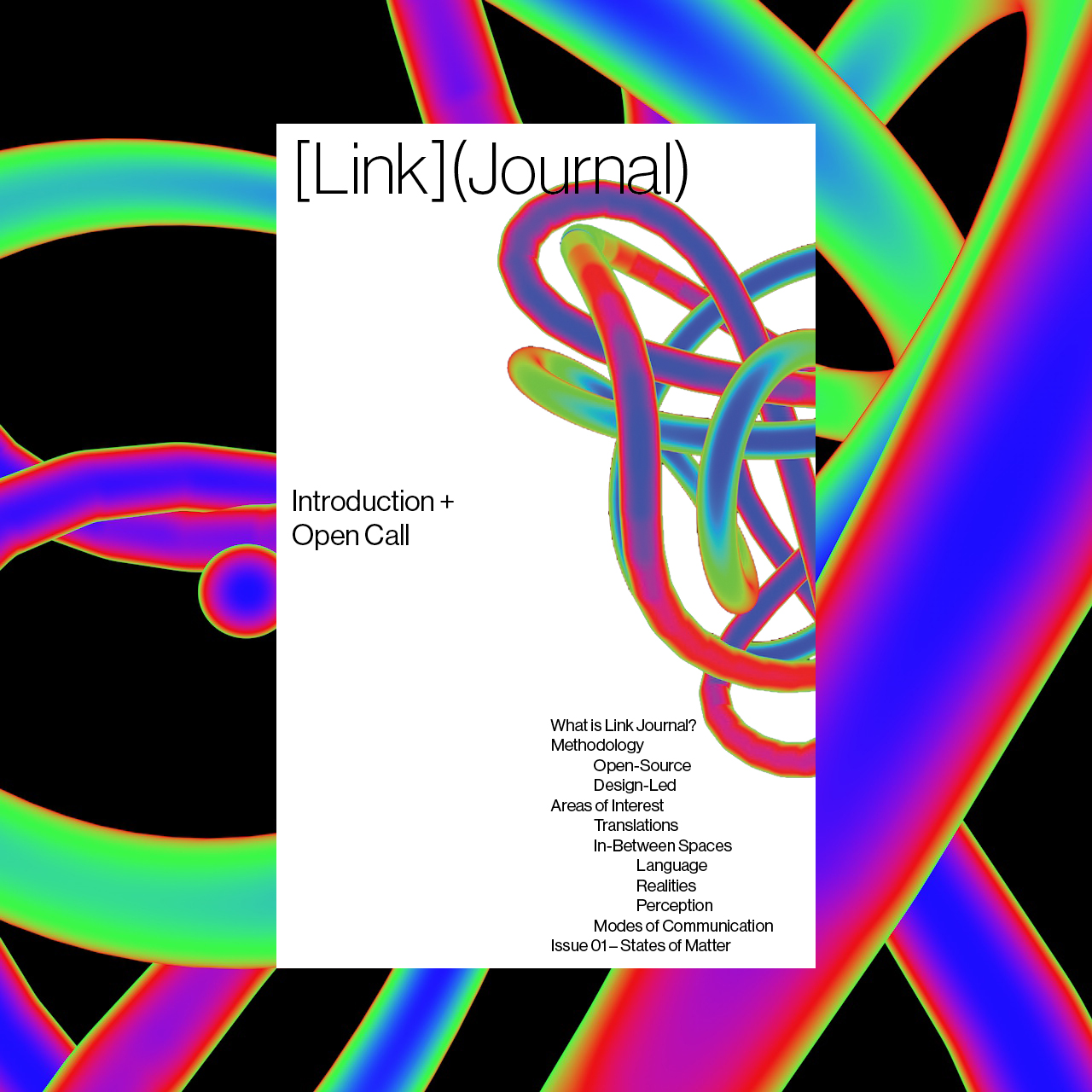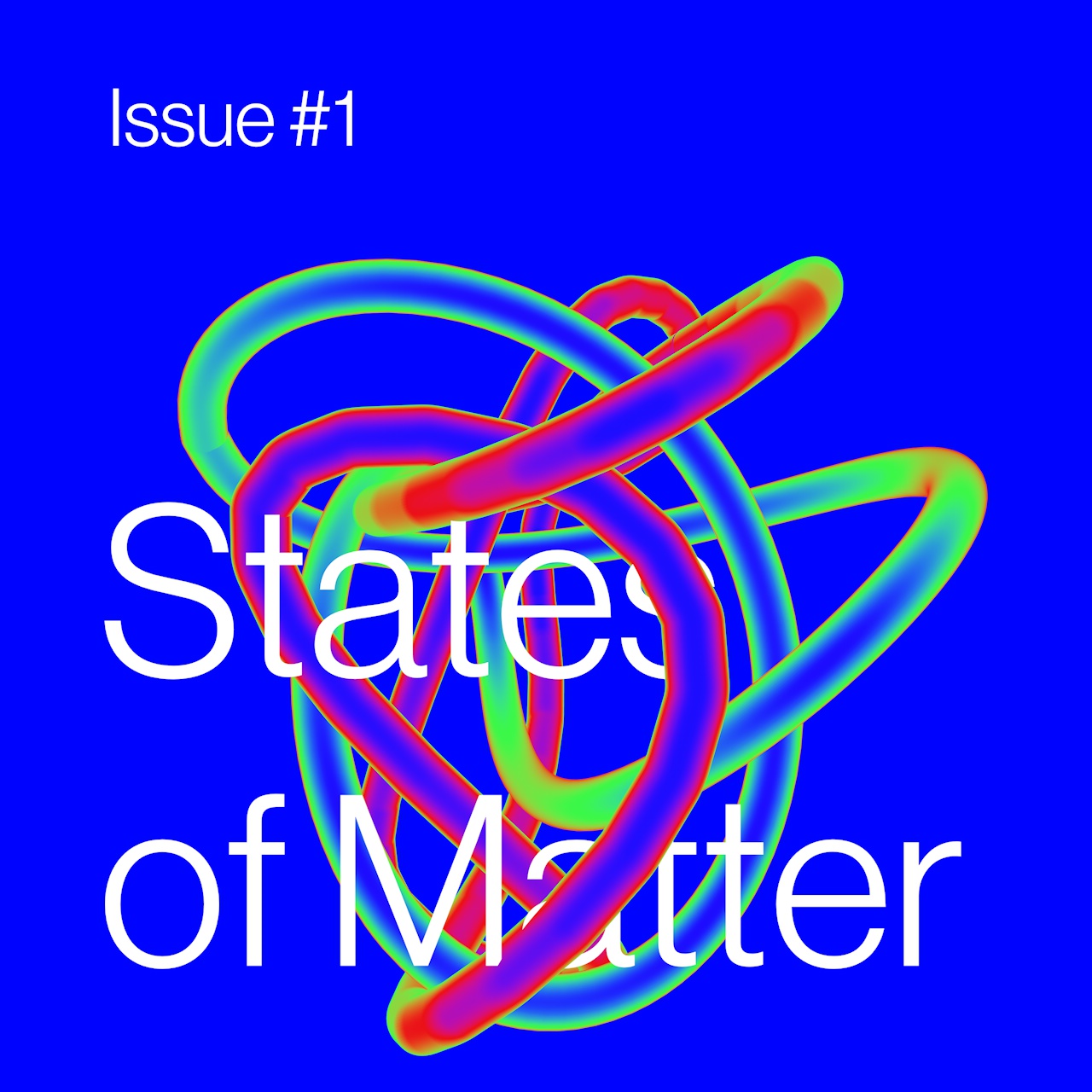LINK Journal

Useful information
- Team members
- Julia Danae Bertolaso Veronica Tran
- Country
- Spain
- Keywords
- Transparency open design-led experimental alternative process research translations in-between spaces language perception realities future communication link hybrid engage community methods knowledge practice publication matter editorial book.
Short Description
A publication to discuss the meaning of ‘in-between’ spaces, translations and modes of communication
Detailed Description
Born from a compulsive curiosity in hybrid environments, LINK Journal is an experiment dedicated to exploring [in-between] spaces.
It seeks to connect opposing ends of different spectrums of thought within visible and invisible environments, in order to form a fertile ground for discussion and communicate different ways of thinking, seeing and doing. It will address a variety of topics
• materiality of digital systems
• exchanges of information mediated by the physical environment
• transparency of processes within creative project development
• embodied methodologies of digital environments
More specifically, it is exploring these topics through the discipline of design; speaking directly to how design and creative practitioners are intertwined with digital and ecological interactions. It is experimental, purposefully meandering. It is a space to bridge ideas, generate new thoughts, engage in conversations and reflect on those intricate connections found in those spaces in-between
Project Details
- Does your design take social and cultural challenges and human wellbeing into consideration?
From the questioning of how will we learn to adapt to changing form of information, find new ways to translate and communicate, how will information manifest in diverse environments and cultures. LINK Journal will explore through an experimental methodology the meaning of this age of entanglement, our online-lead physical connectivity in society, and the existing languages to communicate and make information visible. It will make a projection of tomorrow’s in-between space by sharing emerging topics within the areas of design practice and material futures and will attempt to showcase a unique creative collective of practitioners and creatives based between Barcelona, Melbourne, and London and internationally.
The primary objective of this journal aims to articulate, visualise and communicate the multiple layers of information that surrounds us, questioning where lines converge between data, information, knowledge within cultures, communities and our society. It connects the dots, making links in-between the signs, words, lines and pages of this book. What is a book but a body of symmetries, ink on paper, bound together with string, connecting narratives, connecting materials, and connecting the in-betweens? The journal hence serves as a conceptual and practice-based space on how we can reflect on our relationship, with dominant narratives related to technological ‘progress’.
- Does your design support sustainable production, embodying circular or regenerative design practices?
Starting from the desire to support practitioners and their visions, we created this space with the aim to articulate and visualise layers of the mixed realities, differing perspectives and invisible systems found in a hybrid world. By concretizing those ideas, systemic changes can be made, in the ways of seeing, feeling and doing, for preferable futures to be achieved. Through participation in the design process and decision making, our contributors and collaborators communicate the process in its entirety.
- Does your design use principles of distribution and open source?
LINK Journal is to be a printed, opensource editorial, highlighting connections between disciplines and arguments to address the narratives of 2020. Transparency of thought is essential for the purposeful development of this design experiment. With the aim of making our thought process an open book, we communicate the process in with total transparency for the readers to gain a holistic understanding of how this medium is explored and how it used it as a tool to communicate common knowledge; sketches, scraps, previous versions of writing, communications, budgeting, design, will all be documented and published as a part of the medium.
- Does your design promote awareness of responsible design and consumption?
In the last decades, the development of ICT has multiplied the ways in which visible and invisible information can be exchanged. The speed at which it has evolved is faster than the ability for society to synthesize this information. As a response to this rapid changing ‘state of matter’, an overly connected world has revealed an increasing disconnection to our physical space. Our constant connectivity and energy intensive information and communications technology structures, have a substantial environmental cost with the ultimate capacity to endanger human’s very own existence on Earth.
LINK questions the motivations, moments and methods to connect to the internet in ways that could bring more balance to the relentless pressure put on the Earth’s natural and limited resources. In an increasingly digital culture of ubiquitous and, ‘immaterial’ technology, we’ve come to ask how do layers of mediation of our environment affect society? How does the info-sphere metabolise information and knowledge?
Images


